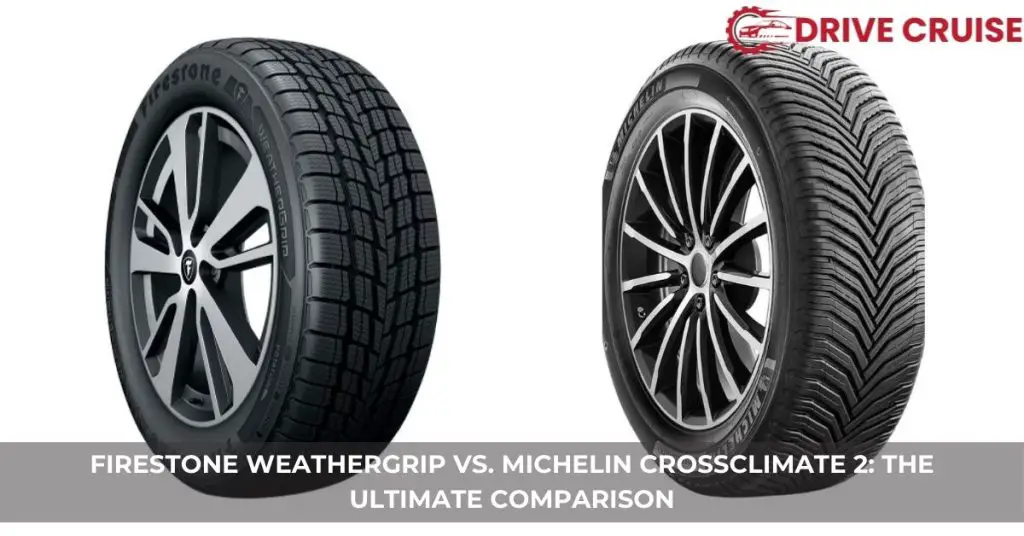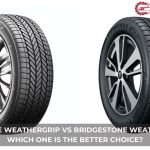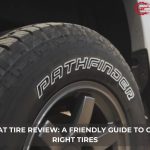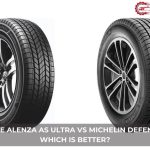When it comes to choosing the right tires for our vehicles, we’re often faced with a barrage of options. Two standout choices that frequently catch our attention are the Firestone WeatherGrip and the Michelin CrossClimate 2. Both promise unparalleled performance across various weather conditions, but how do they truly stack up against each other?
Navigating the maze of tire technology, tread patterns, and customer reviews can be daunting. That’s why we’ve decided to dive deep into a comparison between these two popular tire models. We’re here to break down the specifics, from traction and durability to comfort and price, to help us make an informed decision. Join us as we explore what sets these tires apart and which might be the best fit for our driving needs.
Overview of Firestone WeatherGrip
In navigating the wide range of tire options, the Firestone WeatherGrip emerges as a compelling choice for drivers seeking reliability and performance across various weather conditions. Crafted with an all-weather tread compound, these tires are designed to deliver a solid grip on both wet and dry surfaces, ensuring a secure and comfortable driving experience. The WeatherGrip’s tread design features open shoulder slots and full-depth grooves, which enhance water evacuation, reducing the risk of hydroplaning in heavy rain.
What sets the Firestone WeatherGrip apart is its certified Three-Peak Mountain Snowflake (3PMSF) symbol, indicating its proficiency in light to moderate snow conditions. This certification ensures that drivers can expect dependable winter performance without the need for a dedicated set of winter tires. For those living in areas with unpredictable weather patterns, the WeatherGrip offers a versatile solution, blending the advantages of all-season and winter tires into one.
Durability is another key aspect of the Firestone WeatherGrip. Equipped with a durable compound and optimized tread pattern, these tires are built to last, offering drivers a longer tread life and better value for their investment. Additionally, Firestone incorporates its proprietary full-depth tread features, which maintain consistent performance and traction as the tire wears over time.
On the comfort front, the WeatherGrip tires are engineered to minimize road noise and provide a smooth ride. They achieve this through their unique tread pattern and rubber compounds, which absorb vibrations and reduce the sound generated by the tire.
In terms of price, the Firestone WeatherGrip presents a budget-friendly option for those looking to enhance their vehicle’s safety and performance without breaking the bank. Their competitive pricing, paired with the quality and features offered, make them an attractive choice for a wide range of vehicles and driving needs.
Moving on, let’s explore how the Michelin CrossClimate 2 compares in these critical areas, giving us a clearer understanding of which tire might best meet the specific demands of our driving experiences.
Overview of Michelin CrossClimate 2
Transitioning from the Firestone WeatherGrip, we now shift our focus to the Michelin CrossClimate 2. This tire emerges as a formidable contender in the all-weather category, boasting features that cater to drivers seeking unparalleled performance across varied conditions. Michelin has designed the CrossClimate 2 with a unique V-shaped tread pattern, significantly enhancing its grip on both dry and wet surfaces. This design is not just for aesthetics; it plays a crucial role in the tire’s ability to channel water away, dramatically reducing the risk of hydroplaning.
One of the standout aspects of the CrossClimate 2 is its 3PMSF (Three Peak Mountain Snowflake) certification. This symbolizes its prowess in handling severe snow conditions, a testament to its versatility and safety in winter driving scenarios. Unlike the WeatherGrip, which is certified for light to moderate snow, the Michelin CrossClimate 2 steps it up by ensuring reliable performance even in heavy snow, making it a go-to option for those residing in areas prone to severe winter weather.
Durability is another area where the CrossClimate 2 shines. Michelin integrates its proprietary rubber compound in the tire’s construction, enhancing its longevity and ensuring that it retains its performance characteristics over time. Owners can expect a tire that not only lasts but also maintains its quality of ride and efficiency in wet and dry conditions throughout its life.
Comfort is not compromised either. The Michelin CrossClimate 2 is engineered to reduce road noise, delivering a quieter, more comfortable ride. While its price point may be higher than that of the Firestone WeatherGrip, the investment in a Michelin CrossClimate 2 tire is justified by its comprehensive performance benefits, especially for those prioritizing safety and performance in challenging weather conditions.
In comparison to the WeatherGrip, the Michelin CrossClimate 2 offers enhanced snow performance, durability, and comfort, albeit at a premium. This makes it an enticing option for drivers looking for top-tier versatility and safety in their all-weather tire choice.
Comparative Analysis
Building on our insights into the Firestone WeatherGrip and Michelin CrossClimate 2’s distinctive features, we delve deeper into their comparative aspects across several critical fronts. Our analysis considers traction, durability, comfort, and price, key factors that influence a tire’s performance and overall value.
Traction plays a pivotal role in ensuring driver safety across various weather conditions. The Michelin CrossClimate 2 excels with its V-shaped tread design, providing exceptional grip on both wet and dry surfaces. Its 3PMSF (Three-Peak Mountain Snow Flake) certification suggests remarkable snow traction, outperforming the WeatherGrip, which, while offering commendable all-weather capabilities, lags slightly behind in severe snow conditions.
When considering durability, the Michelin CrossClimate 2 stands out with its proprietary rubber compound that enhances tire life. This compound ensures the tire remains resilient against wear over time, making it a more robust option than the Firestone WeatherGrip. The latter offers a budget-friendly choice but might not match the longevity provided by Michelin’s advanced materials.
Comfort is another critical factor, particularly when it comes to road noise and ride smoothness. The CrossClimate 2 minimizes road noise, thanks to its precise tread pattern, ensuring a quieter, more comfortable ride compared to the WeatherGrip. Firestone’s offering, while adequate for daily use, does not quite reach the superior comfort levels of the Michelin CrossClimate 2.
Finally, price considerations are vital for most consumers. The Firestone WeatherGrip presents a more budget-friendly option, making it an attractive choice for drivers looking for a good balance between cost and performance. In contrast, the Michelin CrossClimate 2, with its enhanced snow performance, durability, and comfort features, justifies its higher price point for those prioritizing these aspects.
Our comparative analysis highlights the Michelin CrossClimate 2’s superior performance in snow conditions, durability, and comfort. However, the Firestone WeatherGrip holds its ground as a cost-effective alternative, offering balanced all-weather capabilities for budget-conscious drivers.
User Reviews and Feedback
Following our comparison of the Firestone WeatherGrip and the Michelin CrossClimate 2 in terms of traction, durability, comfort, and price, we’ve dived into the sea of user reviews and feedback to give you a real-world perspective.
Users consistently praise the Michelin CrossClimate 2 for its exceptional performance in snow, with many highlighting its confidence-inspiring grip and stability in wintry conditions. Drivers appreciate the peace of mind these tires provide when navigating snowy roads, underscoring the tire’s superior traction and safety features. The reduced road noise is another frequently complimented aspect, with motorists enjoying quieter, more comfortable rides.
On the other hand, the Firestone WeatherGrip garners positive feedback for its all-weather capabilities and value proposition. Owners of these tires often note their satisfaction with the WeatherGrip’s performance in a variety of conditions, including rain and light snow. The tire’s affordability is a key point of satisfaction, making them an attractive option for drivers seeking a balanced performance at a more accessible price point.
However, some reviews point out that while the WeatherGrip performs admirably across different weather scenarios, it doesn’t quite match the CrossClimate 2 in terms of snow traction and durability. Users looking for top-tier snow and ice performance tend to lean towards the Michelin, accepting its higher price as a worthwhile investment for superior safety and longevity.
In sum, feedback from users confirms our findings: the Michelin CrossClimate 2 excels in snow performance, durability, and comfort but comes at a premium. Meanwhile, the Firestone WeatherGrip stands out as a budget-friendly all-rounder that covers the basics effectively for those prioritizing value.
Pros and Cons Summary
Continuing our exploration into the Firestone WeatherGrip and Michelin CrossClimate 2, let’s summarize their advantages and disadvantages to provide clearer insights into their capabilities and help you make an informed decision.
Firestone WeatherGrip
Pros:
- Affordability: The WeatherGrip offers great value, being significantly more budget-friendly than the CrossClimate 2, making it accessible for more drivers.
- All-Weather Performance: It delivers reliable performance in various conditions, ensuring dependable traction across both wet and dry surfaces.
- Positive User Feedback: Many drivers appreciate its overall balanced performance and value proposition, highlighting its competency in handling most weather conditions efficiently.
Cons:
- Snow Traction: While satisfactory, its snow traction doesn’t quite match up to the Michelin CrossClimate 2, which could be a decisive factor for those in snow-prone areas.
- Durability: Some users have reported concerns over its long-term wear compared to the Michelin, suggesting it may not be as durable over time.
Michelin CrossClimate 2
Pros:
- Superior Snow Performance: Its exceptional traction in snow sets it apart, making it a top choice for drivers in colder climates or those frequently facing snowy conditions.
- Durability and Comfort: This tire excels in longevity and ride comfort, outpacing many competitors, including the WeatherGrip.
- Safety Features: The CrossClimate 2 is noted for its safety enhancements, particularly in snow and wet conditions, providing drivers with added peace of mind.
- Higher Price Point: The premium performance comes at a higher cost, potentially putting it out of reach for budget-conscious buyers.
- Overqualified for Mild Conditions: For drivers in milder climates, the CrossClimate 2 might offer more features than necessary, making the WeatherGrip a more cost-effective option.
In essence, the Michelin CrossClimate 2 shines for those prioritizing top-notch snow performance and durability, albeit at a higher price. Conversely, the Firestone WeatherGrip stands out as a budget-friendly choice, offering competent all-weather performance for drivers looking to balance cost with capability.
Conclusion
Choosing between the Firestone WeatherGrip and the Michelin CrossClimate 2 ultimately comes down to what we value most in a tire. If we’re looking for an affordable option that performs well in various conditions, the WeatherGrip is our go-to. It offers a solid all-weather performance without breaking the bank. However, for those of us prioritizing snow traction, durability, and overall safety, the CrossClimate 2 is worth the investment. Its superior performance in snowy conditions and longer lifespan justify the higher price tag. Whatever our choice, we’re equipped with the knowledge to pick a tire that meets our needs and expectations. Safe travels!
Related Posts:
- How Much Do You Tip a Car Detailer? A Friendly Guide
- Drive System Malfunction Audi: Causes and Solutions
- Firestone WeatherGrip vs. Michelin CrossClimate 2: The Ultimate Comparison
- How Much Do Monster Truck Tires Cost? A Friendly Guide to Pricing
- What is the Back of a Truck Called? Exploring the Different Names for this Essential Part of a Vehicle







